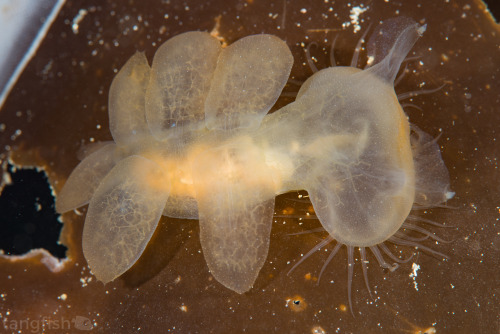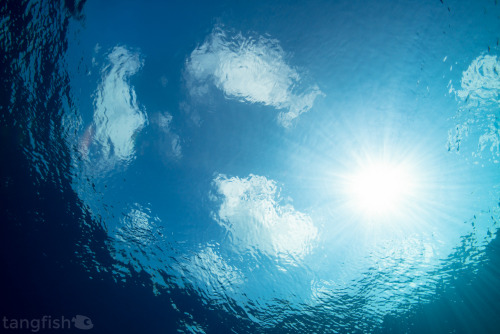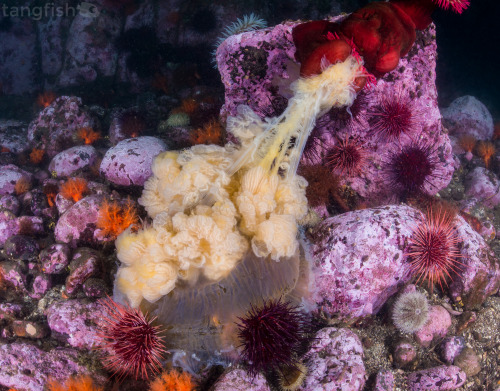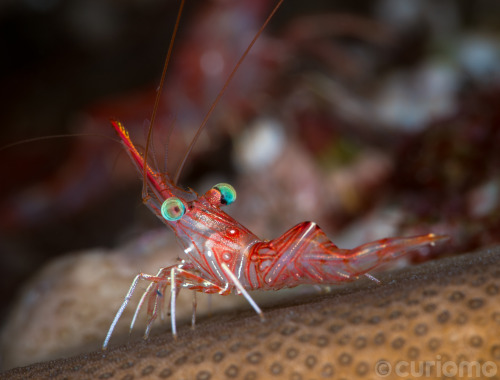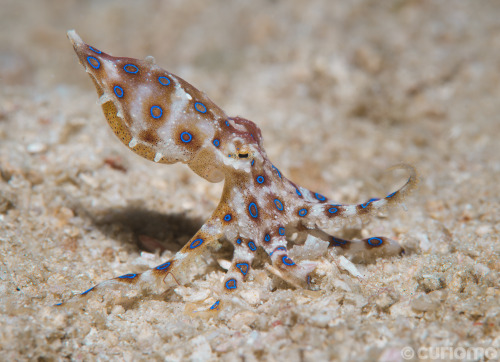#paditv
A small group of us went out looking for whales one day out in Palau, far out from shore. We thought we’d seen signs of the whales, so a few of us jumped into the water and while we were looking around these Silky Sharks suddenly appeared out of nowhere (we were out in the bluewater, meaning that you couldn’t see the bottom or any structure or island around you). The Silky Sharks were attracted by our splashing and the sounds of the boat.
These types of sharks live out in the open ocean, well away from coastal waters and reefs. To survive in that barren environment, they need to be extremely fast, agile and able to sense and hunt prey from a great distance. I loved interacting with these beautiful and inquisitive sharks - photo taken offshore Palau, Western Pacific Ocean
Post link
This huge school of Humpback Snapper that let me swim amongst them - photo taken at Meemu Atoll, Indian Ocean
Post link
Crabs and Lobsters have robust legs for walking around the reef, whereas Shrimp have thin, delicate legs for perching and primarily move around by swimming - photo taken in the Andaman Sea using an UltraMax Ring Flash
Post link
The Coconut Octopus is one of very few animals on the planet known to seek out and make use of objects as tools, in this case a shell used as protection - photo taken at Lembeh Strait, Indonesia
Post link
The main difference between soft and hard corals is that hard corals produce and leave behind a rock-like skeleton as they grow, made of calcium carbonate - CaCO3 (the same substance that chalk and Tums is made out of).
It is these calcified skeletons that together make up the primary structure of a coral reef, which can eventually grow to the size of a mountain range. A good example is the Great Barrier Reef, which despite recent mass bleaching is still presently the largest living thing on Earth and is visible from space - photo taken at Foammulah Atoll, Indian Ocean
Post link
The Hooded Nudibranch (Melibe leonina) supposedly smells like fresh watermelon when taken out of the water. This alien-like sea slug can release its six petal-like cerata in the same way that a lizard can drop its tail when threatened.
Yes, that’s like dropping a trail of watermelon jolly ranchers when being chased - photo taken at Three Tree Point, Puget Sound, Washington
Post link
The Saraswati Anemone Shrimp makes its home on a sea anemone (the purple and green). Fish allow this 1-cm long “cleaner shrimp” to crawl all over them, including inside their mouths and gills, in order to eat tiny unwanted parasites off of the much larger animals.
Since they play such an important role in the health of the reef ecosystem, most if not all other animals just let them do their jobs and don’t try to eat them.
If you look closely you can see right through this shrimp’s exoskeleton and notice the clutch of eggs it’s carrying - photo taken at Kri Island, Raja Ampat, Indonesia
Post link
Marine ecosystems recycle everything and leave nothing to waste, including this Lion’s Mane Jellyfish that wandered too close to a sea anemone that grabbed ahold of it and wouldn’t let go. The sea urchins quickly got in on the action and it was soon over for this poor jelly, who never got to grow to full size.
Speaking of which, the Lion’s Mane Jellyfish is the largest known species of jellyfish in the world. The largest one ever recorded measured over 7 feet across at the bell and its tentacles stretched over 120 feet long, which is pretty incredible for a creature whose lifespan is only one year - photo taken at Salt Creek, Strait of Juan de Fuca, Salish Sea
Post link
Tangfish (that’s me!) photographing the shipwreck of the U.S.S. Kittiwake - photo taken by Sandy Sondrol at West Bay, Grand Cayman, Caribbean Sea
Post link
Cuttlefish are amazing creatures that can instantly vary their color and shape either for camouflage or to communicate with each other. They use jet propulsion to move backward in quick bursts through the water.
The ink that Cuttlefish use to distract and escape from predators has long been used by artists, writers and later, photographers. Its characteristic dark reddish-brown color is where the term “sepia” comes from; Sepia literally means Cuttlefish in ancient Greek, so just think of these amazing cephalopods next time you use a sepia filter on one of your pictures - photo taken in seagrass beds off of North Sulawesi, Celebes Sea
Post link
Spotted Eagle Rays propel themselves through our tropical and warmer temperate oceans using their winglike pectoral fins. Graceful and majestic, they are always a special animal to encounter in the wild. Spotted Eagle Rays’ natural predators are various species of sharks, including the Tiger Shark, Silvertip Shark and Great Hammerhead - photo taken at Meemu Atoll, Maldives, Indian Ocean
Post link
A delicate shrimp finds its way across the reef using its advanced vision and antennae - photo taken in the Indian Ocean
Post link
For such a common animal (and food item) shrimps are beautiful creatures that keep reefs free from debris. Their eyes are specialized for low light and to be able to detect threats from all directions - photo taken in Thailand
Post link
As if the Baby Boxfish weren’t cute enough already, Nature adds polka dots just to be extra sure - photo taken at Puerto Galera, Philippines
like these photos? follow curiomo on instagram
Post link
Yellowmask Surgeonfish can alter their body colors from bright blue to nearly black - photo taken at Komodo National Park, Indonesia
Post link
The Stubby Squid (rossia pacifica), pictured here with a mustache, can be found in waters of the northern Pacific Ocean from Russia and Japan across to the West Coast of North America - photo taken during a night dive at Redondo Beach, WA
like these underwater photos? follow me on instagram
Post link
The Winged Nudibranch is a tiny little sea slug that is able to flap its way through the water like a drunken butterfly in slow motion. They can be found in the temperate waters of the Pacific from Alaska to the Sea of Cortez - photo taken at Seattle, Washington
Post link
The Blue-Ringed Octopus is a tiny and extremely venomous cephalopod found in the tropical waters of the pacific. Each individual carries enough venom to kill over two dozen people within minutes. There is no anti-venom. However, they are not aggressive and will flash their brilliant blue rings when threatened, as a warning of their toxicity - photo taken at Wainilu, Rinca Island, Indonesia
enjoy my underwater photos? follow me on Instagram
Post link
The underwater world is so amazing when you light it up, unveiling so many rich colors that are typically hidden behind the endless blue caused by the scattering of light as it travels through water.
Once in awhile (usually when my batteries die) I like to shoot using only natural light. This is what a reef can look like to the naked eye.
Giant Trevallies cruising through a school of Bluestreak Fusiliers - photo taken at Castle Rock, North Komodo, Flores Sea
Post link








